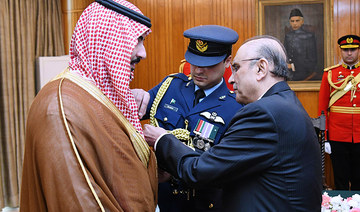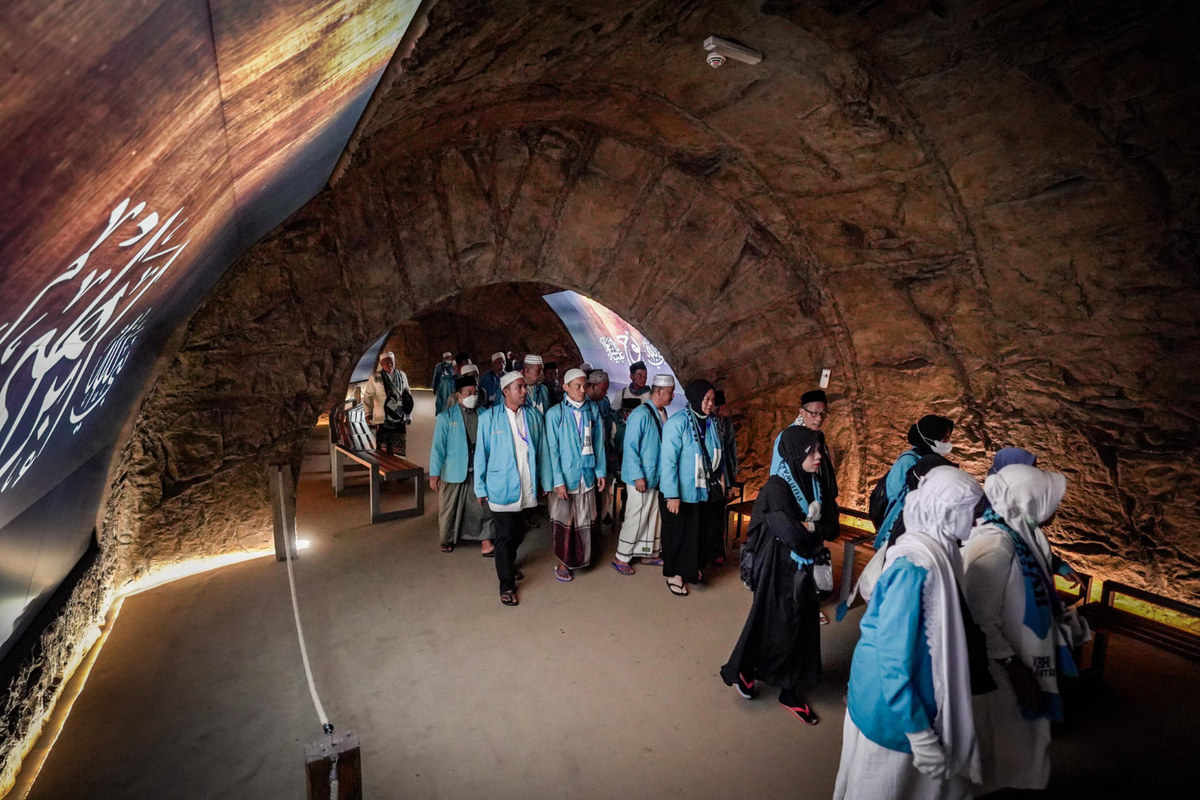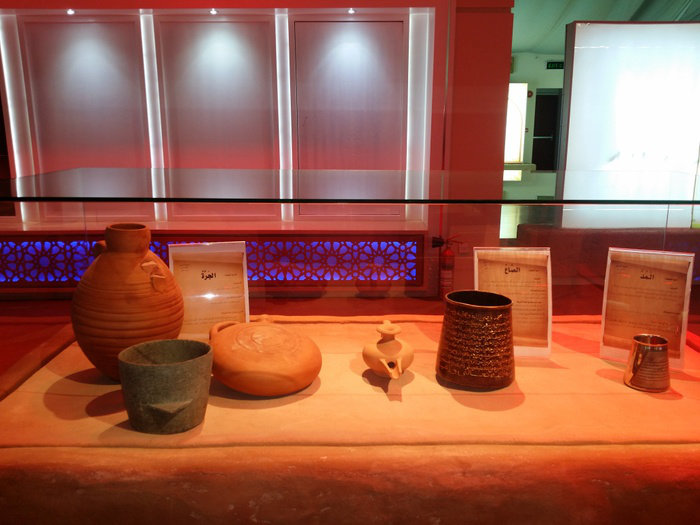ISLAMABAD: The Pakistan Day military parade was held today, Saturday, at the Parade Avenue in the federal capital of Islamabad, with the Saudi defense minister attending as a guest of honor.
The parade is being held on the 84th anniversary of Pakistan's republic day, marked each year to celebrate the adoption of the Lahore Resolution by the Muslim League party, which called for the creation of an independent state for the Muslims of India on March 23, 1940.
Saturday’s parade kicked off with the fly past of fighter jets of the Pakistan air force and navy, while newly inducted J-10 C , indigenously built JF-17 , F-16 and Mirage fighter jets as well as AWACs, P-3C Orion and ATR participating in the fly past.
“The Saudi Defense Minister is attending the parade as a guest of honor,” state-run Radio Pakistan said.
Separately, after the parade, President Asif Ali Zardari conferred the Nishan-i-Pakistan award on Saudi Arabia’s minister of defence, Prince Khalid bin Salman bin Abdul Aziz Al Saud, at a special investiture ceremony held at the Presidency.
The Nishan-e-Pakistan is the second grade of the Order of Pakistan, the highest civilian award in Pakistan. It is awarded to “those who have rendered services of highest distinction” to the national interest of Pakistan. Government officials and civilians, including citizens of Pakistan and foreign nationals, have received the award.
In the Pakistan honours system, the Nishan-e-Pakistan is equivalent to the Nishan-e-Haider, the the nation’s highest military gallantry award.
“The award was conferred in recognition of Prince Khalid bin Salman bin Abdul Aziz Al Saud’s meritorious services for Pakistan and its people, enhancing defence cooperation, strengthening of bilateral ties and contributions towards peace efforts in the region,” state-run APP said.
The award ceremony was attended by Prime Minister Muhammad Shehbaz Sharif as well as federal ministers, top military leaders and members of the diplomatic corps.

The parade is being held on the 84th anniversary of Pakistan's republic day, marked each year to celebrate the adoption of the Lahore Resolution by the Muslim League party, which called for the creation of an independent state for the Muslims of India on March 23, 1940. (Arab News)
“MILITARY PARADE”
Contingents of the Pakistan army, navy and air force as well as Special Services Group, Frontier Corps, Rangers, Khyber Pakhtunkhwa police and Gilgit Baltistan Scouts marched past the dais during Saturday’s military parade, presenting a salute to the chief guest and the guest of honor. Troops from Azerbaijan and China also participated in the parade.
Mechanized columns including tanks, armored personnel carriers, rocket launchers, air defense system, guns, UAVs, short and long range missiles Ra’ad, Nasr, Babur, Shaheen, Ghauri and Ababeel were showcased on the occasion. The army’s engineering corps also presented state of the art equipment.
The parade featured the march and fly past of the helicopters of the navy, air force and army.
“Formations of Sherdils and JF-17 Thunder and F-16 fighter jets presented breathtaking aerobatic maneuvers spreading a range of colors in the skies,” Radio Pakistan said. “Floats depicting culture of Azad Kashmir, Gilgit Baltistan and the four provinces were part of the parade.”
“The sky divers of Special Services Group exhibited free fall from a height of ten thousand feet, carrying national flags and those of services. Afterwards, the national flag was presented to Prime Minister Shehbaz Sharif,” Radio Pakistan added. “The parade culminated with presentation of a special song themed ‘Pochay Jo Naam Koi Tum Pakistan Batana.’”
In a message to the nation ahead of the parade on Saturday morning, PM Sharif said his government was committed to putting the country on the path to economic recovery and prosperity with a “cogent policy reform framework.”
“We are completely cognizant of the serious challenges confronting Pakistan currently including inflation, unemployment, circular debt, fiscal and trade deficit, and above all the growing scourge of terrorism,” the prime minister said.
“I can assure you that we stand committed to put Pakistan on the path to economic recovery and prosperity with a cogent policy reform framework. I hope that these measures will bring economic stability and the current wave of high inflation will recede, bringing respite for our citizens.”
Separately, the Pakistan army congratulated the nation on Pakistan Day, saying “this historic day reminds us of the greatest sacrifices and contributions of our forefathers which they made in the struggle for creation of Pakistan.”
“On this day, Armed Forces of Pakistan renew their resolve to defend the motherland and protect its sovereignty and territorial integrity at all times and at any cost, and uphold the national flag.”
“Let’s cherish the vision of our forefathers and strive to fulfill the dreams they had for our beloved homeland. Happy Pakistan Resolution Day,” the foreign office said.




























